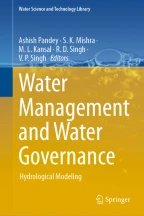
India is the leading consumer of groundwater resources in the world. Moreover, groundwater resource accounts for 85% of rural water supply and 84% of the net irrigated area in India. The groundwater level in the north-western states of India is depleting rapidly in such a manner that they are labeled as ‘over-exploited’ by the Central Groundwater Board (CGWB), India. Hence, the regulation of such a common-pool resource is imperative to arrest its unsustainable free-riding uses. This paper analyzes the trends and present status of groundwater usage in India, the structure of groundwater governance including policies at the central level and three north-western states of India—Punjab, Haryana, and UP. It also examines the interplay of policies of different departments influencing the groundwater resources. We follow qualitative and descriptive analysis by reviewing official documents like government acts, regulatory frameworks, reports, policies and model bills of the center and respective state governments. The study finds that the policies and bills are comprehensive enough to layout a firm action plan on the ground. Although the policies of different concerned departments are well-framed, there is a trade-off among them apparently due to lack of integrated approach. Further, due to the status quo of the groundwater management bills in these states for the past decade, the guidelines framed by the center have no role to play so far. The study suggests that these bills and governance mechanisms must be in tune to adhere to the present groundwater scenario and establishing proper coordination between the center and states for managing this fragile common-pool resource.
This is a preview of subscription content, log in via an institution to check access.